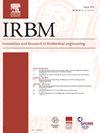应用先进技术提高成骨不全症手术治疗的精确性和个体化:个案研究
IF 4.2
4区 医学
Q1 ENGINEERING, BIOMEDICAL
引用次数: 0
摘要
背景与目的本文旨在展示计算机断层扫描(CT)、计算机辅助设计(CAD)和增材制造等先进技术在成骨不全症(OI)治疗中的精确手术计划和个性化解决方案的集成。主要的研究问题是确定如何利用这些技术在严重的成骨不全病例中获得成功的手术结果,例如本研究中出现的病例。方法本研究涉及一名11岁的儿童,患有闭合性右侧股骨骨干骨折和严重的下肢异常。虚拟和物理规划程序使用CAD软件基于患者特定的CT模型进行。精确定义了近端和远端节段的长度、切割平面和截骨术,以实现所需的手术矫正。此外,骨骼和骨段的3D模型是使用增材制造来物理重现手术过程的。结果手术治疗包括在第一次手术中矫正右侧股骨骨折和左侧胫骨和腓骨,然后在第二次手术中矫正其余节段。采用Fassier-Duval套筒髓内钉固定骨折及截骨部位。整个治疗过程,从第一次手术到实现部分负重,大约持续了15周,包括两次手术和分阶段康复。术后,患者表现出显著的功能改善,包括站立和行走的能力。结论将先进技术整合到成骨不全患者的手术计划中已显示出良好的效果,可改善患者预后并减少并发症。这种方法有可能提高术前计划的准确性,并提供个性化和精确的解决方案,最终提高成骨不全症患者的整体医疗质量。本文章由计算机程序翻译,如有差异,请以英文原文为准。

Enhancing Precision and Personalization in Surgical Management of Osteogenesis Imperfecta Through Advanced Technologies: A Case Study
Background and Objective
The paper aims to demonstrate the integration of advanced technologies, including computed tomography (CT), computer-aided design (CAD), and additive manufacturing, for precise surgical planning and personalized solutions in the management of Osteogenesis Imperfecta (OI). The main research question is to determine how these technologies can be utilized to achieve successful surgical outcomes in severe cases of OI, such as the one presented in this study.
Methods
The study involved an 11-year-old child with OI who suffered from a closed right diaphyseal femur fracture and severe lower extremity abnormalities. Virtual and physical planning procedures were carried out using CAD software based on patient-specific CT models. The length of the proximal and distal segments, cutting planes, and osteotomies were precisely defined to achieve the desired surgical corrections. Additionally, 3D models of the bones and bony segments were manufactured using additive manufacturing to physically recreate the surgical procedure.
Results
The surgical treatment involved the correction of the right femur fracture and the left tibia and fibula in the first procedure, followed by the correction of the remaining segments in a second procedure. The Fassier-Duval telescopic intramedullary nail was used to stabilize the fracture and the osteotomy sites. The entire treatment course, from the first surgery to achieving partial weight-bearing, spanned approximately 15 weeks, including the two surgical procedures and staged rehabilitation. Post-surgery, the patient showed significant functional improvement, including the ability to stand and walk with assistance.
Conclusion
The integration of advanced technologies in surgical planning for OI patients has shown promising results, leading to improved patient outcomes and reduced complications. This approach has the potential to enhance the accuracy of preoperative planning and provide personalized and precise solutions, ultimately elevating the overall quality of healthcare for OI patients.
求助全文
通过发布文献求助,成功后即可免费获取论文全文。
去求助
来源期刊

Irbm
ENGINEERING, BIOMEDICAL-
CiteScore
10.30
自引率
4.20%
发文量
81
审稿时长
57 days
期刊介绍:
IRBM is the journal of the AGBM (Alliance for engineering in Biology an Medicine / Alliance pour le génie biologique et médical) and the SFGBM (BioMedical Engineering French Society / Société française de génie biologique médical) and the AFIB (French Association of Biomedical Engineers / Association française des ingénieurs biomédicaux).
As a vehicle of information and knowledge in the field of biomedical technologies, IRBM is devoted to fundamental as well as clinical research. Biomedical engineering and use of new technologies are the cornerstones of IRBM, providing authors and users with the latest information. Its six issues per year propose reviews (state-of-the-art and current knowledge), original articles directed at fundamental research and articles focusing on biomedical engineering. All articles are submitted to peer reviewers acting as guarantors for IRBM''s scientific and medical content. The field covered by IRBM includes all the discipline of Biomedical engineering. Thereby, the type of papers published include those that cover the technological and methodological development in:
-Physiological and Biological Signal processing (EEG, MEG, ECG…)-
Medical Image processing-
Biomechanics-
Biomaterials-
Medical Physics-
Biophysics-
Physiological and Biological Sensors-
Information technologies in healthcare-
Disability research-
Computational physiology-
…
 求助内容:
求助内容: 应助结果提醒方式:
应助结果提醒方式:


